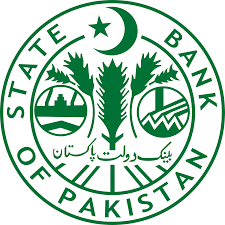KARACHI: Pakistan is actively pursuing up to $4 billion in financing from Middle Eastern commercial banks by the next fiscal year (FY25) as part of its broader strategy to address the country’s external financing needs. This effort was confirmed by Jameel Ahmad, Governor of the State Bank of Pakistan (SBP), during an interview with Reuters on Tuesday.
Ahmad stated that Pakistan is in “advanced stages” of securing $2 billion in additional external financing, which is crucial for the International Monetary Fund’s (IMF) approval of a $7 billion bailout program. This funding is part of Pakistan’s broader financial strategy to stabilize its economy amid ongoing fiscal challenges.
Addressing External Financing Gaps
Pakistan has been grappling with a significant balance of payments crisis, exacerbated by declining foreign exchange reserves and mounting external debt obligations. The country’s foreign exchange reserves have been under pressure due to rising imports, debt repayments, and limited inflows of foreign direct investment. As of the latest reports, the SBP’s reserves have increased slightly by $19 million, reaching $9.291 billion, but this remains insufficient to cover the country’s import needs and debt obligations for an extended period.
The decision to seek financing from Middle Eastern banks aligns with Pakistan’s broader strategy of diversifying its sources of external funding. Middle Eastern countries, particularly Saudi Arabia and the United Arab Emirates, have historically provided financial support to Pakistan through loans, grants, and deferred oil payment arrangements. By tapping into commercial banks in the region, Pakistan aims to secure more sustainable and diversified sources of funding that can help alleviate its immediate financial pressures.
Importance of IMF Program
Securing the additional $2 billion in external financing is not just a financial necessity but also a critical step toward unlocking the IMF’s $7 billion bailout package. The IMF program is seen as essential for stabilizing Pakistan’s economy, restoring investor confidence, and providing a framework for structural reforms that can address the underlying issues of fiscal mismanagement, low tax revenues, and inefficient public sector enterprises.
The IMF’s executive board is expected to review Pakistan’s request for the bailout program, and the approval is contingent on the country demonstrating its ability to secure additional external financing. The $2 billion in funding that Pakistan is close to securing would signal to the IMF and other international stakeholders that the country is committed to meeting its financial obligations and implementing the necessary reforms.
Future Outlook
Looking ahead, Pakistan’s efforts to raise $4 billion from Middle Eastern banks by FY25 will be closely watched by both domestic and international observers. Success in this endeavor would not only provide much-needed relief to Pakistan’s balance of payments but also strengthen its financial ties with key Middle Eastern partners.
However, the road ahead remains challenging. Pakistan will need to navigate complex negotiations, both with the Middle Eastern banks and with the IMF, while also implementing domestic reforms to ensure long-term economic stability. The government’s ability to effectively manage these challenges will be crucial in determining the country’s economic trajectory in the coming years.
4o




